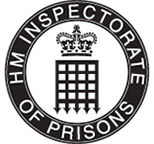Police forces must be better prepared to tackle future instances of violent disorder
Police forces must be better prepared to plan for and tackle serious violence and disorder, the police inspectorate has warned, following a review of the police’s response to disorder in the summer.
Get the report
An inspection of the police response to the public disorder in July and August 2024: Tranche 1
On Monday 29 July 2024, three young girls, Bebe King, Elsie Dot Stancombe and Alice Da Silva Aguiar, were killed in a knife attack in Southport. Following these tragic events, widespread unrest and violent disorder broke out in many towns and cities across the UK.
His Majesty’s Inspectorate of Constabulary and Fire & Rescue Services (HMICFRS) was commissioned by the Home Secretary to carry out a rapid review into the policing response to the disorder which took place, to identify lessons for the future. Part one, published today, includes an assessment of the police service’s capacity and capability to handle violent disorder.
Inspectors found that the large-scale mobilisation of public order public safety (POPS) officers by the National Police Chiefs’ Council (NPCC), along with the quick identification and prosecution of offenders, helped to bring an end to the violence. It was also recognised that throughout the disorder, police officers showed immense bravery and personal sacrifice. Throughout this challenging period, police forces kept the public safe and at the same time, communities supported them.
However, the inspectorate said that forces were unprepared for the scale of the disorder. With hindsight, it was found that the NPCC’s decision to implement the national mobilisation plan was made too late and should have been activated earlier on Friday 2 August 2024. Additionally, intelligence assessments did not predict rising violent disorder well enough and there were gaps in available information for some deployment decisions that were taken.
Inspectors found that national training standards and command structures for dealing with disorder were well-established. But they had concerns that the dress code initially set by some commanders could have left officers vulnerable to injury. They also said that POPS officer training should be improved and that there should be better use of the support offered by the National Police Wellbeing Service, introduced in 2019 to improve well-being.
HMICFRS has made three recommendations for chief constables, police forces and others to take forward, focused on enhancing force, regional and national plans. These include creating and beginning work on plans to improve:
- the police service’s capacity and capability to respond to widespread violent disorder;
- how the police service mobilises POPS resources; and
- the well-being support the police service gives to its officers and staff.
His Majesty’s Chief Inspector of Constabulary Andy Cooke QPM DL said:
“The loss of three young girls, Bebe King, Elsie Dot Stancombe and Alice Da Silva Aguiar, in the knife attack in Southport was a tragedy beyond comprehension.
“Following this, we saw violent disorder spread quickly across many towns and cities. Officers displayed immense bravery in the face of this violence and kept the public safe.
“The national mobilisation of POPS resources, along with the quick identification and prosecution of offenders, was instrumental in ending the disorder and restoring peace.
“The professionalism of those leading the response deserves credit. But the systems and processes they work under need to change.
“With hindsight, the national mobilisation plan should have been activated earlier. Intelligence assessments didn’t predict rising violent disorder well enough; it is crucial that forces are able to better anticipate these threats so they can prepare effectively. The police service must enhance its plans so it can mobilise resources quickly and efficiently.
“Regrettably, this review highlights that the police service hasn’t learned all the lessons from previous notable incidents of violent disorder. Forces need to make, sustain and build on improvements.
“In my State of Policing report in 2022, I made clear the need for better national police decision-making and co-operation, especially when critical collective decisions are made.
“We urge forces to act quickly on our findings and recommendations. There is every possibility that similar violence and disorder could reoccur across the UK. The police service needs to be ready to respond.”
On 6 September 2024, the Home Secretary commissioned HMICFRS to carry out a rapid review into the policing response to the disorder, to identify lessons for the future. The commission has been divided into two tranches of work.
The first tranche of work examines the policing response, including POPS capacity and resilience, mobilising police officers across forces, and the well-being and resilience of officers following exposure to incidents of disorder.
The second tranche will set out findings on intelligence related to violent disorder, social media misinformation and disinformation, and investigations into offences.
Get the report
An inspection of the police response to the public disorder in July and August 2024: Tranche 1
Notes
- For further information, the HMICFRS Press Office can be contacted at 0300 071 6781 or HMICPressOffice@hmicfrs.gov.uk.
- On 6 September 2024, the Home Secretary commissioned HMICFRS to carry out a rapid review into the policing response to the disorder, to identify lessons for the future.
- As part of this inspection, HMICFRS reviewed eight police forces in areas where violent disorder had taken place. These were: Cleveland Police, Devon and Cornwall Police, Humberside Police, Merseyside Police, Metropolitan Police Service, Northumbria Police, South Yorkshire Police and Staffordshire Police.
- Contributions were also made from a range of national and regional bodies responsible for mobilisation, intelligence, investigations, training and officers’ well-being.
- As part of the investigation, HMICFRS:
- Carried out over 140 interviews involving over 200 people from across the police service.
- Examined more than 500 documents and gathered and assessed over 3,000 pieces of evidence.
- Reviewed over 300 media articles to inform our findings.
- Analysed data from police forces, the NPCC, NPoCC and other police and Government agencies.
- Read the Terms of Reference for Tranche 1.
- The police service uses the term public order public safety (POPS) to describe policing incidents and operations where risk to public order and/or public safety is present or anticipated.
- The second tranche of the commission is due to be published in spring 2025.




